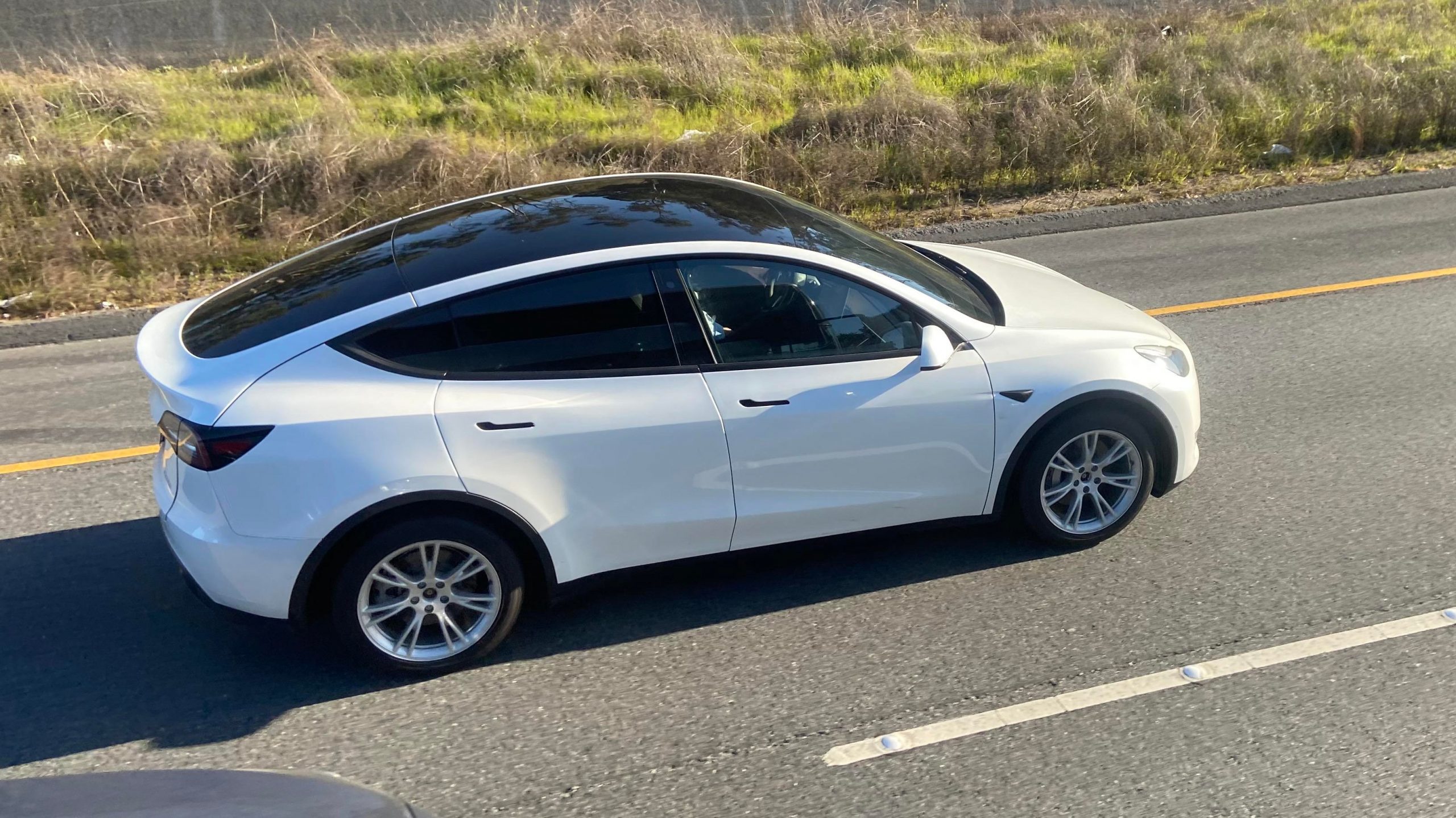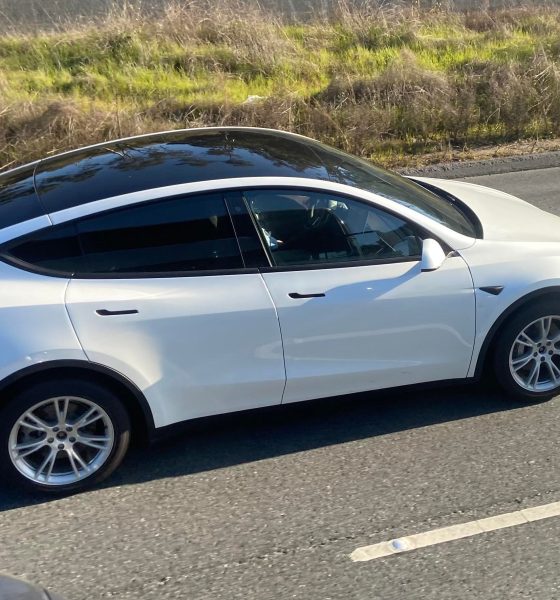

News
Tesla’s ability to deliver the Model Y in various trims at launch is a big deal
The initial deliveries of the Tesla Model Y are about to begin, and as more reservation holders are advised to prepare for delivery, it is becoming more evident that the electric car maker has turned a new page when it comes to its production efficiencies. If Tesla’s first wave of emails to reservation holders are any indication, it appears that the Model Y ramp will be nothing like the Model 3’s rollout.
When the Model 3 started deliveries, Tesla only offered the vehicle in one variant and one interior option: Long Range RWD with black interior. This was done to make it easier for the company to produce the sedan, especially since it was a time when Tesla was still learning how to find its stride in the production of the electric car. It was a pretty good strategy, as it allowed Tesla to find its rhythm first with Long Range RWD production before it attempted to build other, more complex variants like the Model 3 Performance with white interior, which required two motors and a different interior trim.
Reservation holders who wanted a Performance Model 3, or a Dual Motor AWD, or those who opted for Tesla’s white interior, experienced an extended wait that lasted months. Tesla started delivering the Model 3 in the second half of 2017, and customers who wanted a Performance version ended up waiting until the middle of 2018 to receive their electric car. Canadian reservation holders were in for a long wait as well.
This gradual ramp does not seem to be happening with the Model Y. If Tesla’s emails to its reservation holders are any indication, it appears that the company is preparing to deliver not just the dual-motor AWD versions of the vehicle; Performance versions will be released this coming March as well. Apart from this, reservation holders who ordered both black and white interiors have been invited to set a delivery date. But this is not all. Reservation holders in Canada have also received notifications from Tesla, informing them of upcoming Model Y deliveries.
This is something that has never really happened before, at least not at this scale. The reason behind this has not been announced by the electric car maker, though a lot of it may have to do with the Model Y sharing 75% of its parts with the Model 3, Tesla’s highest-volume vehicle available today. Tesla has already optimized its Model 3 production capabilities, after all, to the point where the company can manufacture enough vehicles to address some of the electric car’s demand in other countries. As such, developing the Model Y line may not have been as much of a challenge for the electric car maker.
Tesla has already made a lot of headway in its vehicle production efficiencies over the years. It took a while for the company to refine its Model 3 production, and it is taking all these learnings in the Model Y’s ramp. This is represented by the Model Y’s design and large casts, which are seemingly intended to ensure that the all-electric crossover could be produced in a quick and efficient manner. These will ultimately allow the company to avoid the issues that befell the Model 3’s first iterations, which were faulted by teardown expert Sandy Munro for being far too complex and heavy than it needed to be.
Simply put, the Tesla that’s about to deliver the all-electric crossover today is a far different, far more mature company as the one that tried to mass-produce the Model 3 back in 2017. This ultimately bodes well for the Model Y, considering that CEO Elon Musk expects the vehicle to outsell the Model S, Model X, and Model 3 combined. This may also send some chills down the spine of rival automakers, as Tesla’s biggest disruptor yet may end up entering key markets at a speed and scale that’s never really been seen before.

Elon Musk
Elon Musk’s X will start using a Tesla-like software update strategy
The initiative seems designed to accelerate updates to the social media platform, while maintaining maximum transparency.

Elon Musk’s social media platform X will adopt a Tesla-esque approach to software updates for its algorithm.
The initiative seems designed to accelerate updates to the social media platform, while maintaining maximum transparency.
X’s updates to its updates
As per Musk in a post on X, the social media company will be making a new algorithm to determine what organic and advertising posts are recommended to users. These updates would then be repeated every four weeks.
“We will make the new 𝕏 algorithm, including all code used to determine what organic and advertising posts are recommended to users, open source in 7 days. This will be repeated every 4 weeks, with comprehensive developer notes, to help you understand what changed,” Musk wrote in his post.
The initiative somewhat mirrors Tesla’s over-the-air update model, where vehicle software is regularly refined and pushed to users with detailed release notes. This should allow users to better understand the details of X’s every update and foster a healthy feedback loop for the social media platform.
xAI and X
X, formerly Twitter, has been acquired by Elon Musk’s artificial intelligence startup, xAI last year. Since then, xAI has seen a rapid rise in valuation. Following the company’s the company’s upsized $20 billion Series E funding round, estimates now suggest that xAI is worth tens about $230 to $235 billion. That’s several times larger than Tesla when Elon Musk received his controversial 2018 CEO Performance Award.
As per xAI, the Series E funding round attracted a diverse group of investors, including Valor Equity Partners, Stepstone Group, Fidelity Management & Research Company, Qatar Investment Authority, MGX, and Baron Capital Group, among others. Strategic partners NVIDIA and Cisco Investments also continued support for building the world’s largest GPU clusters.
News
Tesla FSD Supervised wins MotorTrend’s Best Driver Assistance Award
The decision marks a notable reversal for the publication from prior years, with judges citing major real-world improvements that pushed Tesla’s latest FSD software ahead of every competing ADAS system.

Tesla’s Full Self-Driving (Supervised) system has been named the best driver-assistance technology on the market, earning top honors at the 2026 MotorTrend Best Tech Awards.
The decision marks a notable reversal for the publication from prior years, with judges citing major real-world improvements that pushed Tesla’s latest FSD software ahead of every competing ADAS system. And it wasn’t even close.
MotorTrend reverses course
MotorTrend awarded Tesla FSD (Supervised) its 2026 Best Tech Driver Assistance title after extensive testing of the latest v14 software. The publication acknowledged that it had previously criticized earlier versions of FSD for erratic behavior and near-miss incidents, ultimately favoring rivals such as GM’s Super Cruise in earlier evaluations.
According to MotorTrend, the newest iteration of FSD resolved many of those shortcomings. Testers said v14 showed far smoother behavior in complex urban scenarios, including unprotected left turns, traffic circles, emergency vehicles, and dense city streets. While the system still requires constant driver supervision, judges concluded that no other advanced driver-assistance system currently matches its breadth of capability.
Unlike rival systems that rely on combinations of cameras, radar, lidar, and mapped highways, Tesla’s FSD operates using a camera-only approach and is capable of driving on city streets, rural roads, and freeways. MotorTrend stated that pure utility, the ability to handle nearly all road types, ultimately separated FSD from competitors like Ford BlueCruise, GM Super Cruise, and BMW’s Highway Assistant.
High cost and high capability
MotorTrend also addressed FSD’s pricing, which remains significantly higher than rival systems. Tesla currently charges $8,000 for a one-time purchase or $99 per month for a subscription, compared with far lower upfront and subscription costs from other automakers. The publication noted that the premium is justified given FSD’s unmatched scope and continuous software evolution.
Safety remained a central focus of the evaluation. While testers reported collision-free operation over thousands of miles, they noted ongoing concerns around FSD’s configurable driving modes, including options that allow aggressive driving and speeds beyond posted limits. MotorTrend emphasized that, like all Level 2 systems, FSD still depends on a fully attentive human driver at all times.
Despite those caveats, the publication concluded that Tesla’s rapid software progress fundamentally reshaped the competitive landscape. For drivers seeking the most capable hands-on driver-assistance system available today, MotorTrend concluded Tesla FSD (Supervised) now stands alone at the top.
News
Elon Musk’s Grokipedia surges to 5.6M articles, almost 79% of English Wikipedia
The explosive growth marks a major milestone for the AI-powered online encyclopedia, which was launched by Elon Musk’s xAI just months ago.

Elon Musk’s Grokipedia has grown to an impressive 5,615,201 articles as of today, closing in on 79% of the English Wikipedia’s current total of 7,119,376 articles.
The explosive growth marks a major milestone for the AI-powered online encyclopedia, which was launched by Elon Musk’s xAI just months ago. Needless to say, it would only be a matter of time before Grokipedia exceeds English Wikipedia in sheer volume.
Grokipedia’s rapid growth
xAI’s vision for Grokipedia emphasizes neutrality, while Grok’s reasoning capabilities allow for fast drafting and fact-checking. When Elon Musk announced the initiative in late September 2025, he noted that Grokipedia would be an improvement to Wikipedia because it would be designed to avoid bias.
At the time, Musk noted that Grokipedia “is a necessary step towards the xAI goal of understanding the Universe.”
Grokipedia was launched in late October, and while xAI was careful to list it only as Version 0.1 at the time, the online encyclopedia immediately earned praise. Wikipedia co-founder Larry Sanger highlighted the project’s innovative approach, noting how it leverages AI to fill knowledge gaps and enable rapid updates. Netizens also observed how Grokipedia tends to present articles in a more objective manner compared to Wikipedia, which is edited by humans.
Elon Musk’s ambitious plans
With 5,615,201 total articles, Grokipedia has now grown to almost 79% of English Wikipedia’s article base. This is incredibly quick, though Grokipedia remains text-only for now. xAI, for its part, has now updated the online encyclopedia’s iteration to v0.2.
Elon Musk has shared bold ideas for Grokipedia, including sending a record of the entire knowledge base to space as part of xAI’s mission to preserve and expand human understanding. At some point, Musk stated that Grokipedia will be renamed to Encyclopedia Galactica, and it will be sent to the cosmos.
“When Grokipedia is good enough (long way to go), we will change the name to Encyclopedia Galactica. It will be an open source distillation of all knowledge, including audio, images and video. Join xAI to help build the sci-fi version of the Library of Alexandria!” Musk wrote, adding in a later post that “Copies will be etched in stone and sent to the Moon, Mars and beyond. This time, it will not be lost.”








